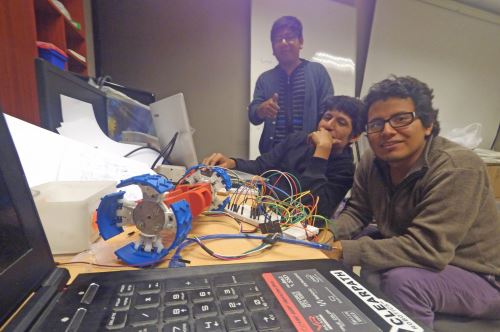Peruvian engineering students —who recently earned second place at international competition C'Space with a prototype satellite— are taking it up a notch: Relying on French expertise, they will now build a rocket to launch their device.
This way, National University of Engineering (UNI) students Adriana Ticona, Jhoseling Melgarejo, Jose Carlos Espinoza, Williams Solis and Ivan Rodriguez will literally pursue new heights for their winning project CanSat Rover.
Bozonnet said the support comes in recognition of their innovative project, which ranked second —only behind Japan— during the 54th edition of C'Space.

The French expert explained the team would first develop two 1-meter mini-rockets before building a 2.5-meter one that could take the CanSat as high as 1.5 km.
"We will then develop another rocket —a supersonic rocket— that allows for more technical development, as it demands much more study," Bozonnet told Andina news agency.
The team will thus be able to work on a range of different rockets a student can build.
CanSat Rover
With the aid of an embedded parachute, the team's satellite prototype CanSat Rover can move around after landing to collect data.

"The design of the CanSat Rover is innovative, since we made a special capsule that favors its launching. In addition, it has a wheel-expansion mechanism that facilitates movement," team member Williams Solis underlined.
Despite a few electronic glitches, CanSat Rover's mechanical structure beat that of the Japanese winning team.
Held in Tarbes (France) on July 15-22,
C'Space aerospace competition gathered undergraduate and graduate university students from every corner of the world.
It is worth noting the Peruvian team was the only delegation representing Latin America.
(END) LIT/RRC/DHT/MVB